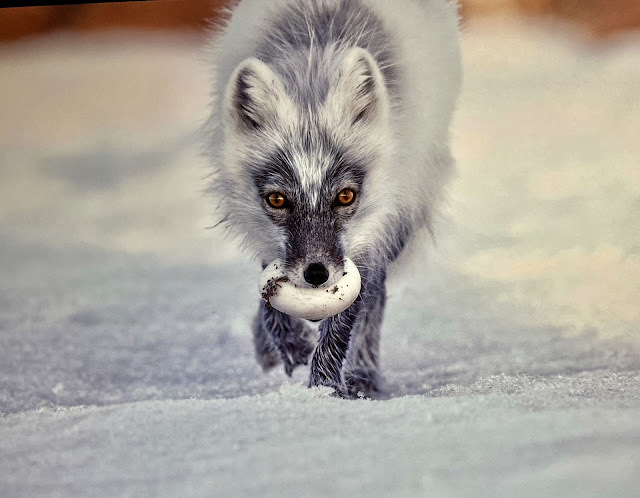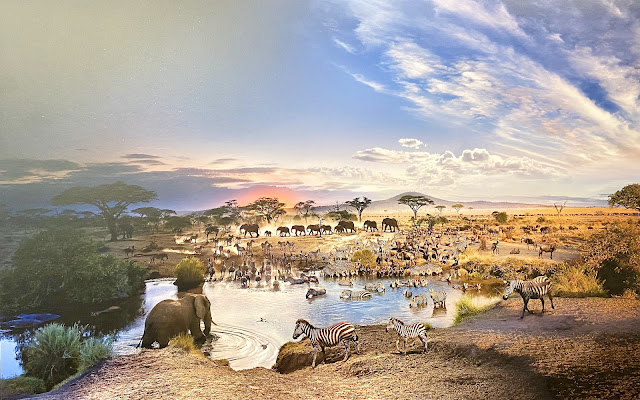Saturday, April 5, 2025
Friday, April 4, 2025
The greatest wildlife photographs at the North Carolina Arboretum
"Photography should inspire. Photography should awe. Photography should inform. And at National Geographic, photography should tell a story. Some photos, no matter how wonderful, don't make the pages of National Geographic magazine because they don't advance the narrative. But when an image makes you stop, think, and wonder, that's when the magic happens. And that is the bar every photograph in this exhibition has surpassed." from exhibition information
Currently, our local Arboretum is presenting a new exhibit called The Greatest Wildlife Photos. It shows the best wildlife photos from the pages of National Geographic magazine.
*SERENGETI DAY TO NIGHT, Stephen Wilkes - Serengeti National Park, Tanzania, 2015
On the day of his photo shoot in Tanzania, Stephen Wilkes drove to the watering hole at 1:30 a.m. He was accompanied by an armed park ranger to protect him from wildlife and poachers. He spent the next 26 hours on site photographing the watering hole.
Wilkes considers himself incredibly lucky to have photographed the watering hole on a day when it was visited by so many species, from zebras and wildebeests to elephants and hippos.
He was amazed to see how many rival species shared the watering hole without conflict, relying on a type of communication that humans rarely witness.
*VUMBI PRIDE, Michael Nichols - Serengeti National Park, Tanzania, 2011
Photographer Michael Nichols wanted to capture the unique images of the Vumbi pride. These enormous cats are usually photographed from a vehicle, but Nichols wanted to see them from a different perspective.
He and his team built what they called a “lion tank.” The vehicle was motorized and remote-controlled, and could be driven around the hills and valleys of the lions’ territory. Its cameras were completely encased in metal, making them immune to the lions’ curiosity. Nichols operated the camera from the safety of his vehicle, sending the tank into the pride. When the lions sniffed it, they realized it was harmless and inedible. Nichols managed to position it at eye level with the pride, allowing him to see the world through the lion’s eyes.
He and his team built what they called a “lion tank.” The vehicle was motorized and remote-controlled, and could be driven around the hills and valleys of the lions’ territory. Its cameras were completely encased in metal, making them immune to the lions’ curiosity. Nichols operated the camera from the safety of his vehicle, sending the tank into the pride. When the lions sniffed it, they realized it was harmless and inedible. Nichols managed to position it at eye level with the pride, allowing him to see the world through the lion’s eyes.
Labels:
Arboretum,
Art,
Exhibition,
Museum,
North Carolina
Subscribe to:
Comments (Atom)









